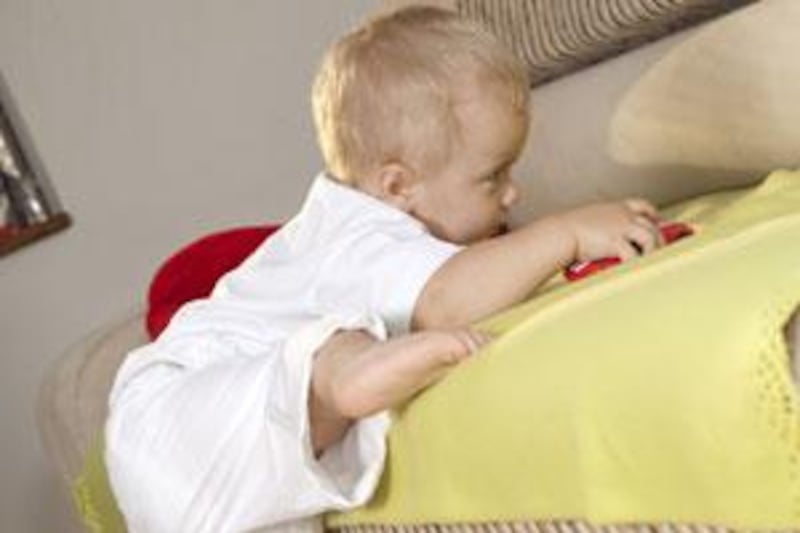When asked why he wanted to climb Mount Everest, the mountaineer George Mallory responded "because it is there". It was the 1920s and the peak of the world's highest mountain had yet to be reached. His enigmatic reply became a rallying cry for daredevil climbers for years to come, not least because Mallory died trying to climb the mountain in 1924. I am reminded of this famous retort when I find Astrid standing on top of the kitchen table one morning. She looks quite stable and is not very near the edge, but it is a long way down and the floor is tiled and hard. I bring her back to earth, but pretty quickly she scampers around to the chair, pulls herself up, clambers over and stands atop the summit again.
She cannot be trying to get anything off the surface because the table is bare. Instead, there is something about the height and the process of getting there that she finds compelling. Just a few weeks after learning to walk, she is already trying to climb. In his book Mountains of the Mind, Robert Macfarlane points out that climbing mountains is quite a recent phenomenon. In other words, we have no inherent or primal urge to scale great heights. Until the mid-17th century, mountains were viewed as nature's warts and boils, blights on the earth's surface, obstacles in the path of journeys and exploration. To climb a mountain was tantamount to lunacy, especially since in some cultures it was believed they were home to a cast of terrifying gods.
The 19th century saw a shift in attitudes to mountainous landscapes. Climbing mountains became entwined with the lure of the Romantic sublime, a quest to find and express all that is lofty, vast and awe-inspiring in the world. As this way of thinking developed, the thrill and danger of climbing mountains became an added attraction. Despite yielding nothing tangible and being home to little inherently useful, climbing mountains has become a popular activity and, at its most extreme, a symbol of the pinnacle of human endeavour.
Back down at an altitude of around one metre, Astrid shows little sign of tiring in her attempt to reach the summit of the table. Apparently, climbing has many developmental benefits for toddlers. It helps to improve co-ordination, gets both sides of their brains working together, trains muscles, refines hand-eye co-ordination and enhances spatial awareness skills. These boons must be balanced with the obvious dangers. Astrid already has a shiny purple bruise on her forehead, a memento from an earlier expedition to reach my computer keyboard. Her legs and arms are peppered with other marks and abrasions. I fear she could seriously injure herself if her furniture climbs go unchecked.
The answer, according to experts, is to redirect this urge to climb into safer activities. Instead of clambering on furniture, try plastic slides, playground equipment or even small trees. Living in an apartment in Abu Dhabi, none of these alternatives are particularly easy. We don't even have stairs for Astrid to climb up and down. To fulfil this need for a change of perspective and a shift in height, I have started picking Astrid up and flinging her into the air. She smiles and laughs giddily, but I doubt it will put an end to the climbing. As long as our apartment has furniture, Astrid will continue to clamber on it. Like the crew at base camp, we have to make those expeditions as safe as possible.
Despite all manner of frilly dresses, yellow bows, pink ribbons, polka dot hair clips and shoes with strawberries on, Astrid is still frequently mistaken for a boy. "So pretty", people say, but this gender-neutral statement is promptly followed by another like "such a pretty boy". Admittedly, when Astrid was a few months old, we steered clear of pink, preferring to dress her in whites, greens and yellows. But recently her feminine wardrobe has flourished. She has a lot of dresses. Many of them have tints of rose, fuchsia and coral. Boy or girl? There can be little doubt. And yet, doubt lingers.
The only reason I can think of is that Astrid does not have her ears pierced, while many girls from the region and the Indian subcontinent wear earrings. If correct, it is interesting that this gender indicator carries so much weight in different cultures. Earrings seem to override colours and clothes. As long as Astrid does not have pierced ears, we will politely have to correct people.






